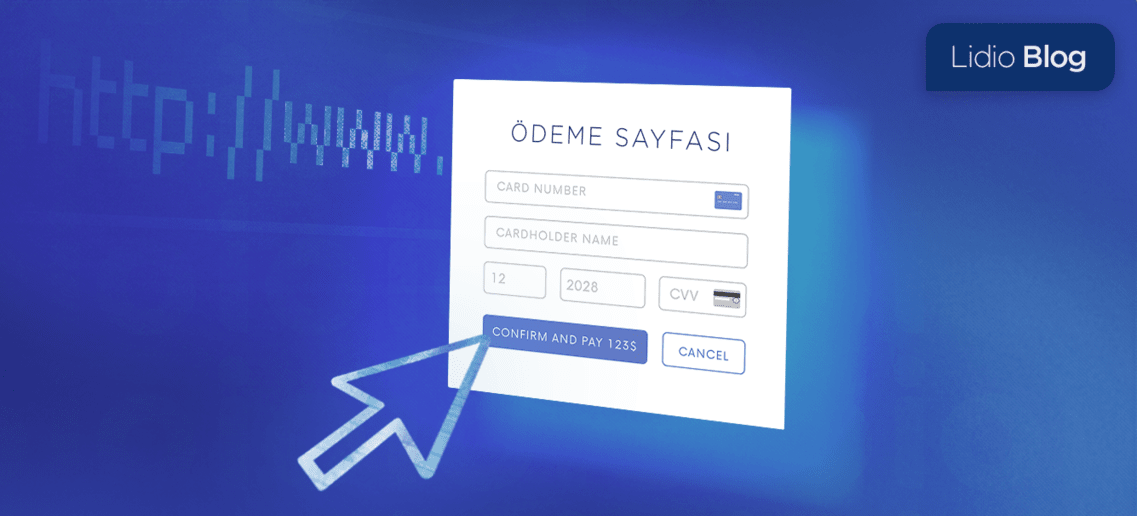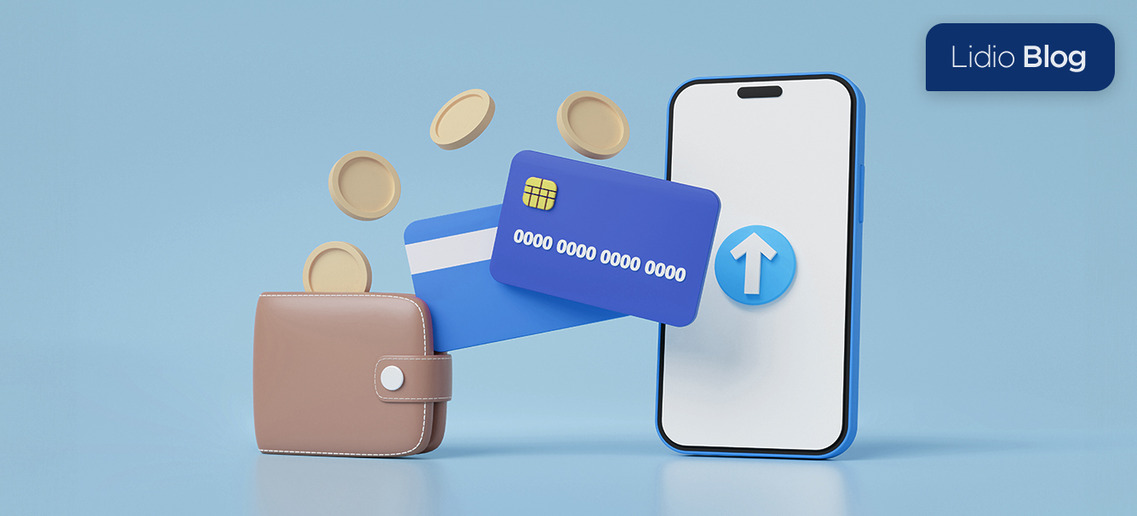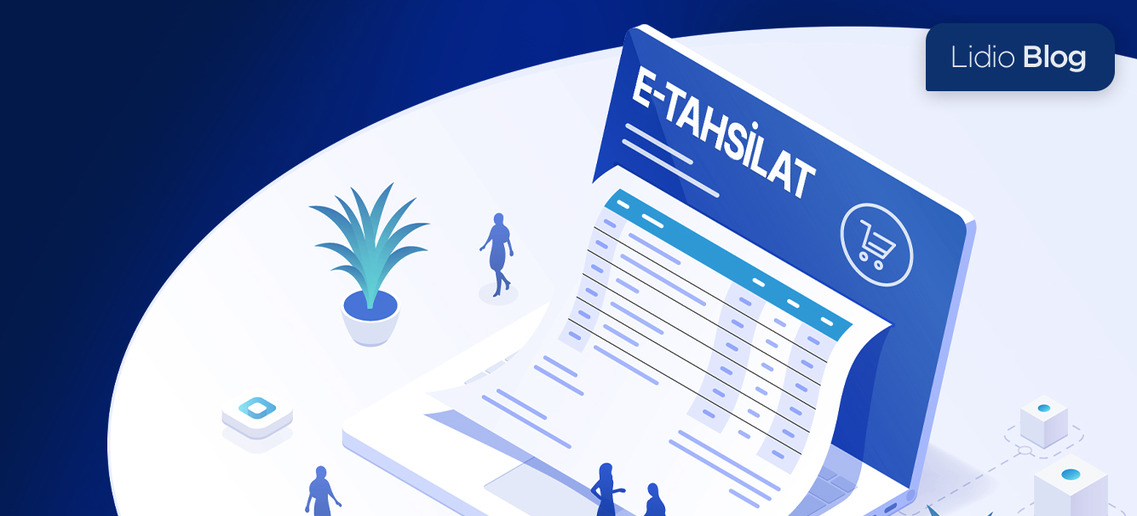
Tek Tıkla Ödeme Nedir E-Ticarette Dönüşüm Oranlarını Artırmanın Yeni Yolu
Tek Tıkla Ödeme Nedir E-Ticaret’te Dönüşüm Oranlarını Artırmanın Yeni Yollarını Keşfedin...
Açık bankacılık nedir, işletmelere nasıl avantajlar sağlar öğrenmek için blog yazımıza göz atın!

Açık bankacılık (open banking) kavramının beraberinde getirdiği yeni düzenlemeler ile bankacılık verileri üzerinde önemli değişiklikler yaratması ve finans sektörünü kökten değiştirmesi beklenmektedir. Birleşik Krallık’tan Avrupa’ya yayılan yeni düzenlemelerle veri sahipliğinin müşteri üzerinde kalmasını destekleyen açık bankacılık, üçüncü parti hizmet sağlayıcılarının birden fazla kurumdan veri toplamasına izin vererek kullanıcıların harcama ve gelir bilgilerini analiz etmesini sağlayıp bütçe kontrolünü kolaylaştıran bir sistemdir. Size daha iyi bir finansal hizmet sunmak için veriler, üçüncü parti hizmet sağlayıcılar üzerinden güvenli kanallar aracılığıyla paylaşılır. Bu sayede ihtiyacınıza uygun finansal çözümlerle buluşabilir, bankacılık işlemlerini pratik bir şekilde gerçekleştirebilirsiniz.
Açık bankacılık hizmetleri sayesinde ürün ve hizmet çeşitliliği geniş bir yelpazede sunulur. Açık bankacılık sistemleri ile e-para, banka ve ödeme kuruluşuna ihtiyaç duymadan tüm ödemelerinizi gerçekleştirebilirsiniz. Bu sistemde geleneksel bankacılıktan farklı olarak bankaya olan bağımlılık en aza indirilir. Böylelikle internet bankacılığını kullanmadan da para akışını pratik bir şekilde sürdürebilir, vergi ödemelerinizi gerçekleştirebilirsiniz. Tüm bankalardaki hesaplarınıza tek bir arayüz üzerinden ulaşmanız veri kontrolünü kolaylaştırırken, kredi başvuruları, varlıklarınıza dair raporlar, risk analizleri ve kişiselleştirilmiş finansal ürünlere de tek bir platformdan erişmenize olanak sağlar. Üstün bir inovasyon örneği olan açık bankacılık, hesap hareketleri yönetimini daha kolay hale getirir. Dahili API ve açık API teknolojilerinden yararlanan sistem geniş bir yazılım kütüphanesi sunarak sizi farklı platformlardaki API uygulamalarına ve bankacılık hizmetlerine ulaştırır. API bankacılık olarak da bilinen bu hizmetler, internet bağlantısı bulunan her yerde tüm bankacılık uygulamalarından yararlanmanıza olanak tanır.
Kişiselleştirilmiş müşteri deneyimleri her ihtiyaca uygun çözümler yaratır. Finans yönetiminde verimliliği etkili bir şekilde destekleyen açık bankacılık hizmetleri, kanal çeşitliliği ile pratik ödeme sistemlerine sahiptir. Açık ve anlaşılır grafiklerle sunulan nakit akış raporları ile bütçe verileri, hesap yönetiminiz hakkında gerekli ipuçlarıyla buluşmanızı sağlar. Sisteme entegre edilmiş muhasebe sistemi, para kontrolünü kolaylaştırdığı gibi yapay zekanın sunduğu finansal önerilerden yararlanmanıza yardımcı olur. Aynı zamanda EFT, Swift ve havale masraflarından da kurtulabilirsiniz. Bordrolama süreçlerini tek bir kanal aracılığıyla takip ederek maaşla ilgili hesaplama ve raporlamalara pratik bir şekilde ulaşabilirsiniz.
PSD2 olarak da bilinen Gözden Geçirilmiş Ödeme Hizmetleri Direktifi, inovatif gelişmeleri destekler. Üçüncü Parti Servis Sağlayıcılar (3rd Party Service Providers) ile veri paylaşımı, finans ve ticaret sektörünün gelişmesi için önemli bir atılımdır. Yenilikçi çevrim içi ödeme ve bankacılık sistemlerini destekleyen PSD2, üçüncü parti sağlayıcıların tabi olduğu sınırları belirlemeyi ve haklarını korumayı amaçlar. Aynı zamanda tüketici haklarını ve güvenliğini de koruyarak yenilikçi uygulamaların gelişmesini destekler. Bu sayede uygulamaların daha düşük maliyetlerle hazırlanması kolaylaşır. Var olan elektronik bankacılık uygulamaları açık bankacılık sistemine uyarlanır ve böylece daha güvenli ve pratik ödeme hizmetleriyle buluşmanız sağlanır.
Türkiye’de yeni yeni gelişen bu hizmetler, kurumsal kullanıcıların deneyimlemeye başladığı yeniliklerden oluşur. Yakın zamanda bireysel kullanıcılara da sunulacak servis ve hizmetler, finansal teknoloji kuruluşları ve bankalar tarafından sağlanacaktır. Açık bankacılık servislerine bağlı hizmetlere ilişkin usul ve esasları belirlemek için BDDK yetkili kılınmıştır. BDDK bankacılık işlemlerini düzenlerken Merkez Bankası da ödeme kuruluşları arasındaki usul ve esasları belirleyecektir. 6493 sayılı kanuna eklenen bu düzenlemeler, herkesin pratik bir şekilde kullanabileceği açık bankacılık hizmetlerini destekleyen niteliktedir. Regülasyonlarla dijital hayatın bir parçası haline gelecek olan açık bankacılık, mevzuata uygun olarak şekillenerek her kullanıcının ihtiyaçlarına hitap eder. Bankacılık anlayışına yeni bir soluk getirecek bu sistem yaygınlaştıkça hizmet çeşitliliğinin de artması beklenmektedir.

Tek Tıkla Ödeme Nedir E-Ticaret’te Dönüşüm Oranlarını Artırmanın Yeni Yollarını Keşfedin...

CVV Kodu Nedir? Neden önemlidir? Öğrenmek için blog yazımızı zirayet edin!...

Provizyon Nedir? Provizyon Ne İçin Kullanılır? Öğrenmek için blog yazımızı ziyaret edin!...

QR Kod Nedir? QR Kod Ne İçin Kullanılır? Öğrenmek için blog yazımızı zirayet edin!...

Linkle ödeme nedir, linkle ödeme sistemi nasıl çalışır, avantajları nelerdir, ve linkle ödeme nasıl alınır merak ediyorsanız detaylı bilgi için blog yazımızı okuyun!...

Ödeme sistemleri, online mağazalarınızda müşterilerinizden ödeme almak için kullanılan finansal teknolojilerin tümüne verilen addır. Detaylı bilgi için web sitemizi ziyaret edin!...

Ödeme sayfası nedir, sayfa güvenliği nasıl anlaşılır, ödeme sürecinin güvenli olduğundan emin olma yolları nelerdir hakkında detaylı bilgi için blog yazımızı okuyun. ...

Startup Nedir? Startup nasıl kurulur öğrenmek için blog yazımızı zirayet edin!...

Check Out Nedir? Neden önemlidir öğrenmek için blog yazımızı zirayet edin!...

Dijital Cüzdan Nedir? ? Neden önemlidir öğrenmek için blog yazımızı zirayet edin!...

E-Tahsilat Nedir? E-Tahsilat Ne İçin Kullanılır? Öğrenmek için blog yazımızı zirayet edin!...

İnternet alışverişinde tüketicilerin hakları nelerdir, kabul edilen sözleşmeler neyi ifade eder detayları ile öğrenmek için blog yazımıza göz atın!...

Sanal POS hakkında tüm bilmeniz gerekenler: Öğrenmek için blog yazımıza göz atın!...

Sepeti terk etme oranları işletmeler için neden önemlidir, nasıl minimize edilir öğrenmek için blog yazımıza göz atın!...

Geleneksel ödemelerden açık bankacılığa finansal serbestleşme nedir ve neden önemlidir öğrenmek için blog yazımıza göz atın!...

Uluslararası ödemeler nasıl gerçekleştirilir, hangi yöntemler kullanılır öğrenmek için blog yazımıza göz atın!...

Ödeme alma sürecinde tahsilatları tek ekrandan yönetmek işletmelere ne gibi avantajlar sağlar öğrenmek için blog yazımıza göz atın!...

ERP nedir, POS ve hesap hareket takibi nasıl yapılır öğrenmek için blog yazımıza göz atın!...

Issuer, Acquirer ve PSP kavramları nelerdir, PSP seçimi neden önemlidir öğrenmek için blog yazımıza göz atın!...

İnternetten yapılan alışverişlerde dolandırıcılığa karşı kullanılan güvenlik önlemleri nelerdir öğrenmek için blog yazımıza göz atın!...

E-ticarette online satış yapmanın püf noktaları nelerdir, tüketici deneyimi nasıl iyileştirilir öğrenmek için blog yazımıza göz atın!...

Açık bankacılık nedir, işletmelere nasıl avantajlar sağlar öğrenmek için blog yazımıza göz atın!...

Güvenli online alışverişin şifresi: 3D Secure Ödeme nedir, ne işe yarar öğrenmek için blog yazımıza göz atın!...

Kredi kartı, kapıda ödeme, havale/kredi, mobil ödeme gibi alternatif ödeme yöntemleri nelerdir, nasıl kullanılır öğrenmek için blog yazımıza göz atın!...